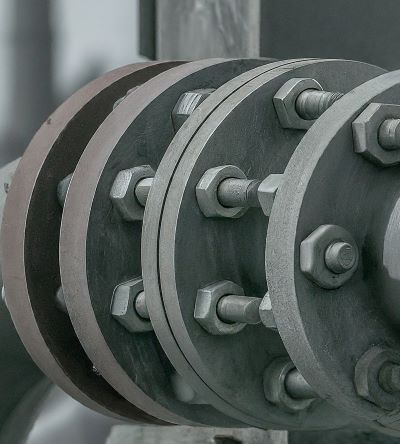Flanges are the workhorses of piping systems. They form strong connections between pipes, valves, and other equipment. But a seemingly simple flange connection can become a major headache if leaks develop.
Here, we’ll explore some key tips to ensure your flange connections are secure and reliable.
Pre-Installation Considerations
Before you even tighten the first bolt, setting the stage for a secure connection is crucial. Here’s what to consider:
➡️ Flange Selection: Not all flanges are created equal. Choose the right type and size based on your application. Pressure rating, material compatibility with the fluid being carried, and temperature are all crucial factors. Refer to industry standards like ASME B16.5 for flange selection guidance.
➡️ Gasket Gurus: Gaskets are the unsung heroes of flange connections, forming the vital seal. Select the appropriate gasket material, thickness, and sealing requirements based on the type of fluid, pressure, and temperature. Common gasket materials include Teflon, rubber, and various metallic options.
➡️ Surface Prep is Key: Just like a good paint job needs a clean canvas, a secure flange connection requires proper surface preparation. Flange surfaces should be clean, smooth, and free of defects like scratches, gouges, or rust. A good cleaning with a wire brush or abrasive may be necessary.
Flange Assembly and Tightening
Now it’s time to put it all together. Here’s how to ensure proper flange assembly and tightening:
➡️ Crisscross Pattern: Tighten the bolts in a crisscross pattern, gradually applying even pressure. This ensures the flange faces seat correctly and avoids uneven stress.
➡️ Torque it Right: Don’t guess! Use a calibrated torque wrench to achieve the recommended bolt load specified by the flange manufacturer or industry standards. Over-tightening can damage the flange or gasket, while under-tightening can lead to leaks.
➡️ Heat Cycle Re-Tighten: In some applications, particularly those involving high temperatures, the initial heat cycle can cause the bolts to loosen slightly. Re-tightening the bolts after the system reaches operating temperature is a good practice.
Advanced Techniques for Secure Connections
For extra peace of mind, consider these advanced techniques:
➡️ Thread Sealant: While not a substitute for a good gasket, thread sealant on the bolts can provide an extra layer of leak prevention. However, be aware that some sealants can compromise the torque reading, so use them judiciously.
➡️ Double Sealing Power: For critical applications, consider using a double-sealing method. This involves using a metallic ring or gasket in conjunction with a primary gasket for enhanced leak protection.
➡️ High-Pressure Heroes: For very high-pressure applications, advanced bolting techniques like torque-turn or hydraulic tensioning might be necessary. These methods require specialized tools and expertise, so consult with a qualified professional.
Common Mistakes to Avoid
Even the most seasoned professionals can make mistakes. Avoid the following frequent pitfalls:
➡️ Over/Under-Tightening: As mentioned before, both over and under-tightening bolts can lead to leaks and connection failure.
➡️ Gasket Goofs: Using the wrong size or damaged gasket is a recipe for disaster. Ensure your gasket is compatible with the application and in good condition.
➡️ Misaligned Flanges: Flanges that aren’t properly aligned can put uneven stress on the connection and compromise the seal. Double-check alignment before tightening the bolts.
➡️ Skipping Re-Tightening: Neglecting to re-tighten bolts after initial heat cycles can lead to leaks down the road.
Inspection and Maintenance
Your work isn’t done after the initial installation. Regular inspection and maintenance are crucial for long-term flange connection security:
➡️ Leak Watch: Regularly inspect flange connections for signs of leaks, including moisture, staining, or unusual sounds.
➡️ Bolt Check: Periodically check the tightness of the bolts, and re-tighten if necessary.
➡️ Gasket Replacement: Gaskets don’t last forever. Be aware of the lifespan of your chosen gasket material and replace it when necessary to maintain a secure seal.
Conclusion
Follow these top tips and industry standards. Then, you can make secure and reliable flange-to-flange connections in your piping systems. Remember, good planning, careful assembly, and ongoing maintenance are key. They prevent leaks and ensure safe, efficient operation.
For complex applications or troubleshooting issues, don’t hesitate to consult with qualified personnel.
Post time: Jun-04-2024


